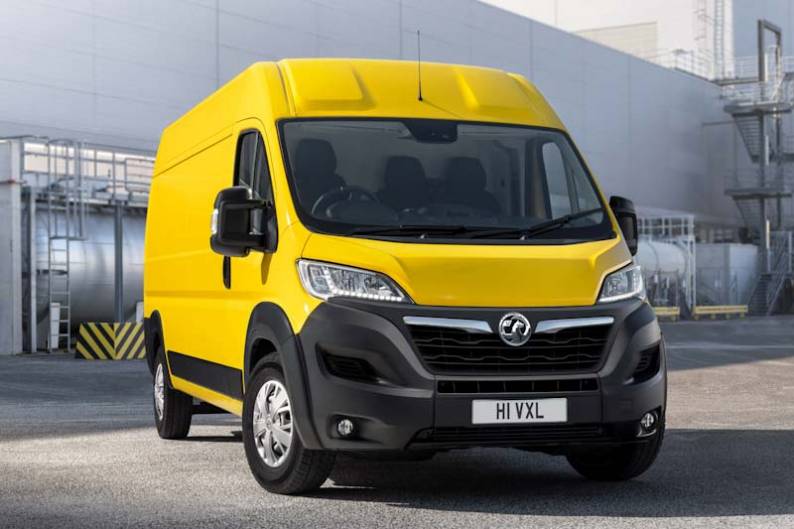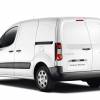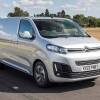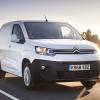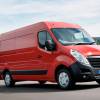
RAC sale – up to 33% off*
• Roadside cover from £5.29 a month†
• We get to most breakdowns in 60 mins or less
• Our patrols fix 4/5 breakdowns on the spot

Vauxhall's Movano Electric has improved, but is still a work in progress, thinks Jonathan Crouch
Ten Second Review
Vauxhall's third generation Movano shares everything with its Peugeot, Citroen and Fiat Stellantis Group large LCV cousins, so it's natural that it also shares their full-battery drivetrain too. Which is what has brought us this Movano Electric model, an alternative to the ordinary diesel variant for forward-thinking businesses.
Background
In the industry's race to develop and normalise full-electric vans, the biggest potential environmental gains are to be made in the switch away from combustion power for the largest LCVs. But big vans need big operating ranges and to date, EV technology simply hasn't been able to provide that. Things though, are gradually changing.
To get a feel for that, take a look at the model we feature here, Vauxhall's Movano Electric. It was originally launched back in 2020 (then called the 'Movano-e') when the Griffin brand's biggest van switched over to the shared design already used by Peugeot, Citroen and (in a slightly different form) by Fiat. At original launch, the all-electric Movano had a 70kWh battery but more recently, as well as the change of name, there's also been a change of battery - to a 75kWh unit, which pushes up drive range by useful 15 miles.
Driving Experience
Unlike with electric versions of its close cousins, the Citroen e-Relay and the Fiat E-Ducato, Vauxhall isn't offering a lower-capacity battery option with this Movano Electric, so there's just a single 75kWh battery on offer, which will take you up to 154 miles on every charge. That's a decent improvement on the 139 mile range that applied to the earlier 70kWh Movano-e model. But it's still significantly down on the 192 mile range you'd get from a comparable Fiat E-Ducato (which has a 79kWh battery).
This Vauxhall's battery powers a 90kW electric motor that provides 122hp and 260Nm of instant torque. To give you some perspective, a comparable entry-level diesel Movano has 120hp and 300Nm of pulling power. Expect the Movano Electric to feel nippy around town, but it might struggle when fully loaded at motorway speeds or when going up steep hills, so it's probably just as well that the payload capacity isn't particularly great.
On the plus side, this EV model's under-floor battery positioning results in a low centre of gravity, improving cornering and stability even when fully loaded. There's a mode selector that allows drivers to switch between ECO, NORMAL and POWER settings. There's also a 'B' option that ploughs extra energy back into the battery, offering more resistance while you're slowing down. Top speed is just 84mph.
Design and Build
Apart from the badging and the charging flap, there are no exterior giveaways to this Movano's full-EV status. Vauxhall wasn't given leave to redesign the front end of this shared Stellantis Group design, so the nose section is much the same as with related Citroen and Peugeot models, save for the addition of the familiar Vauxhall Griffin badge, with its chromed wings either side. The large high-mounted headlights incorporate daytime running lights. And there's a multi-piece front bumper to minimise accident damage and reduce repair costs.
Climb inside and you'll be greeted by decent quality cab trim and a reasonably modern dashboard layout. As you'd expect, this Movano features a dual passenger seat, this one incorporating a drop-down desk unit. Up to ten in-cab storage areas are available, including the glovebox, a dash-mounted document clip and various open or lidded compartments on the dashboard. In addition, there are large door pockets, storage space beneath the passenger seat and a sizeable 22-litre overhead storage compartment.
There's been a clear effort in design here not just to improve the perception of quality in the cab but also to beef up high use, high stress items such as the rear doors. These have been reinforced and high strength door hinges are used. Similarly, the sliding side load door gets reinforced rails, tough-design runners and security-tested door locks.
Market and Model
Prices, as you'd expect, are much the same as those being charged for the Citroen e-Relay, Peugeot e-Boxer and Fiat E-Ducato models that share this Vauxhall's engineering. That means that without VAT but after deduction of the government's £5,000 Plug-in Van Grant, you're looking at starting figures beginning at just over £58,000 for the L3 version. Add £900 more for the lengthier L4 variant. There's only one 75kWh battery option - and only one trim level ('Prime') too.
At least your business will get a reasonable amount of kit for its money. There's air conditioning, a 6-way driver's seat with lumbar adjustment, electronic cruise control with a speed limiter and a 5-inch colour centre touchscreen with Bluetooth. This monitor also provides a navigation system, which gives you online traffic information in real time. Safety features include forward collision alert, blind spot warning and lane departure warning.
Movano Electric operators additionally get 'Vauxhall Connect', allowing them to interact with this van when they're away from it. This app allows access to information such as nearby charging stations. There's also Vauxhall's e-Call and b-Call technology, where in the event of an emergency or breakdown drivers are put in touch with a trained advisor with just the touch of a button.
Practicalities and Costs
On to practicalities. You don't get a choice of roof heights with the Movano Electric - just the standard H2 model. And body lengths are limited to the longer L3 and L4 models. Unlike the Citroen e-Relay, there's no heavy duty version, which means payload is very limited. 710kg will be the most you can carry - in the L3 version. With the L4 variant, that drops to just 665kgs. That's better than a Mercedes eSprinter. But Vauxhall shouldn't congratulate itself. In contrast, a Citroen e-Relay with the same 75kWh battery can take up to 1,100kgs. And the slightly more distantly-related Fiat E-Ducato can take up to 1,885kgs. Outside the Stellantis Group, other rivals can easily better this Vauxhall's payload showing too. A Renault Master E-Tech can manage up to 1,490kgs.
Load capacity figures are the same as with a diesel-powered Movano. That's because the drive system's lithium-ion battery is mounted under the floor between the front and rear axle and so doesn't impinge on the cargo bay. In L3 configuration, the Movano Electric has a load deck length of 3705mm and an internal load height of 1932mm, which gives a 13 m3 capacity. The largest Movano Electric L4 has a load deck length of 4070mm and a 17.0m3 capacity.
We gave you the range figure - 154 miles - in our Driving section. In recent times, Vauxhall has made improvements to the Movano Electric's charging hardware, so topping up the 75kWh battery from 0-80% capacity using a 22kW three-phase charger will now take 4 hours, half the amount required previously. Like its Citroen and Peugeot stablemates, this Vauxhall is converted to electric power in the UK by firm called BEDEO.
Like Vauxhall's other fully electric LCV models, the Movano Electric is exempt from current ultra-low and congestion charge payments. The zero emissions powertrain also allows businesses to save significantly on company van tax, with a 0% Benefit-in-Kind tax rate. This provides eligible businesses with immediate and significant annual savings that can amount to thousands of pounds.
Summary
The Movano Electric will please only a vanishingly small segment of the market for large all-electric LCVs. That's because a restricted payload means it'll appeal only to businesses with lighter loads to carry. Still, if that works for your fleet, you'll find the drive range just about competitive and the pricing reasonable value. At least by class standards anyway.
In future, shared Stellantis Group engineering will allow Vauxhall to offer more competitive all-electric large vans than this. But if your fleet needs a big full-battery LCV right now and space takes priority over weight, then this one should probably be on your list.

